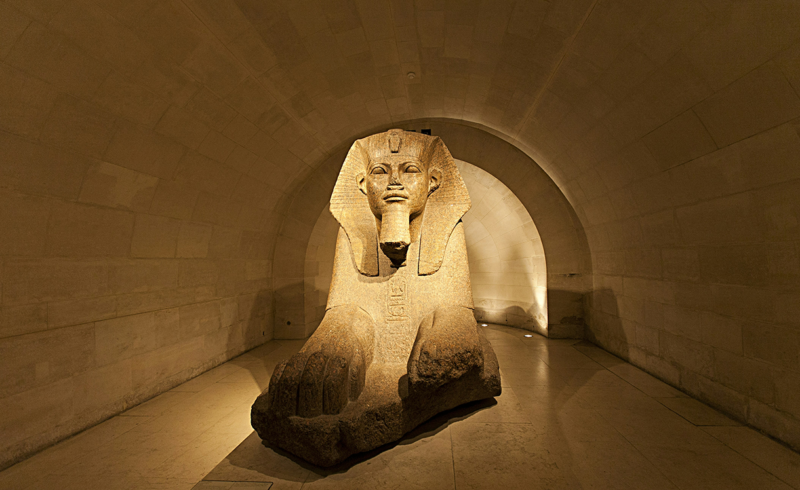
The Louvre Museum in Paris is a symbol of art, culture, and history, drawing millions of visitors each year. While the Mona Lisa and the Venus de Milo are well-known masterpieces housed within its walls, the Louvre is much more than its famous artworks. Beneath its grand exterior lies a wealth of secrets, hidden gems, and intriguing stories that enrich its legacy. This article takes you on a journey to uncover the lesser-known aspects of the Louvre, including what lies beneath the iconic glass pyramid.
The Evolution of the Louvre: From Fortress to Museum
A Medieval Fortress
- Original Purpose: The Louvre began as a fortress built in the late 12th century by King Philip II to protect Paris from invasions.
- Architectural Remnants: Visitors can explore the medieval moat and fortress foundations in the Sully Wing’s basement.
Royal Residence
- Palace Transformation: In the 14th century, King Charles V converted the fortress into a royal residence.
- Renaissance Influence: Francis I initiated a redesign in the 16th century, inviting Italian artists and architects to contribute, including Leonardo da Vinci.
Birth of the Museum
- French Revolution: The Louvre became a public museum in 1793, showcasing the nation’s art collections.
- Expansions: Over the centuries, the museum expanded to include new wings and courtyards, becoming the world’s largest art museum.
The Glass Pyramid: A Modern Icon with Hidden Depths
Architectural Marvel
- Design and Controversy: Designed by Chinese-American architect I.M. Pei, the Louvre Pyramid was completed in 1989 amid much debate over its modernist style contrasting with the classical architecture.
- Symbolism: The pyramid represents transparency and accessibility, serving as the main entrance to the museum.
What Lies Beneath: The Underground World
- Inverted Pyramid (La Pyramide Inversée): Directly beneath the glass pyramid is an inverted pyramid skylight, illuminating the underground shopping mall, Carrousel du Louvre.
- Carrousel du Louvre: This underground complex houses shops, restaurants, and exhibition spaces, blending commerce with culture.
- Medieval Remains: The underground area also features remnants of the original fortress walls, providing a glimpse into the Louvre’s ancient past.
Hidden Gems Within the Louvre
The Galerie d’Apollon
- Architectural Splendor: A stunning gallery adorned with elaborate frescoes, gilded decorations, and a breathtaking ceiling.
- Crown Jewels: Houses a collection of French crown jewels, including the Regent Diamond.
The Egyptian Antiquities
- Extensive Collection: Over 50,000 artifacts spanning from 4,000 BC to the 4th century AD.
- Notable Pieces: The Great Sphinx of Tanis and the Seated Scribe.
The Musée des Arts Décoratifs
- Decorative Arts: Showcases furniture, textiles, jewelry, and ceramics from the Middle Ages to the present.
- Design Evolution: Provides insight into the development of decorative styles over centuries.
The Islamic Art Department
- Cultural Diversity: Features over 3,000 works from Islamic civilizations.
- Architectural Highlight: Located under a stunning golden roof in the Cour Visconti.
Fascinating Facts About the Louvre
The Largest Art Museum
- Size and Scale: Spanning over 782,000 square feet, it would take approximately 100 days to see every piece if you spent 30 seconds on each.
A Home for Masterpieces and Myths
- Da Vinci Code Connection: The Louvre plays a significant role in Dan Brown’s novel, sparking increased interest and tourism.
- Hidden Messages: Some believe the museum holds secret codes and symbols within its artworks and architecture.
Art Rescue During WWII
- Evacuation Efforts: Before the Nazi occupation, thousands of artworks were clandestinely moved to various locations across France.
- The Mona Lisa’s Journey: The iconic painting was moved six times during the war to protect it from theft and damage.
The Ghost of the Tuileries
- Legend of the Red Man: A mythical figure said to haunt the Tuileries Garden, appearing before significant events or tragedies.
Visiting the Louvre: Tips and Insights
Planning Your Visit
- Peak Times: The museum is busiest on weekends and Tuesdays; consider visiting on Wednesday or Friday evenings when it’s open late.
- Ticket Reservations: Booking tickets online in advance can save time and ensure entry.
Navigating the Museum
- Map and Highlights: Obtain a museum map and decide on key artworks or sections to prioritize.
- Guided Tours: Join a thematic tour to gain deeper insights into specific collections or eras.
Accessibility
- Facilities: The Louvre offers amenities for visitors with disabilities, including elevators and wheelchairs.
- Family-Friendly: Children’s activities and educational programs are available.
The Louvre’s Global Influence
Satellite Museums
- Louvre-Lens: Located in northern France, focusing on temporary exhibitions and innovative displays.
- Louvre Abu Dhabi: Opened in 2017, showcasing art from around the world with an emphasis on bridging Eastern and Western cultures.
Digital Expansion
- Online Collections: The Louvre offers virtual tours and an extensive online database of its collections.
- Educational Resources: Provides materials for students, educators, and researchers globally.
The Future of the Louvre
Restoration Projects
- Ongoing Preservation: Continuous efforts to restore and maintain artworks and historical architecture.
- Sustainable Practices: Implementing eco-friendly initiatives to reduce the museum’s environmental footprint.
Cultural Engagement
- Exhibitions and Events: Hosting international exhibitions, concerts, and cultural events to engage diverse audiences.
- Community Programs: Outreach initiatives aimed at making art accessible to all segments of society.
Conclusion
The Louvre is more than a museum; it’s a living testament to human creativity, history, and cultural evolution. From its medieval foundations to the modern glass pyramid, the Louvre encapsulates centuries of transformation. Unveiling its secrets and hidden gems enriches the visitor experience, offering a deeper appreciation of this iconic institution. Whether exploring the underground marvels beneath the pyramid or discovering lesser-known artworks, the Louvre invites you on a timeless journey filled with wonder and discovery.






